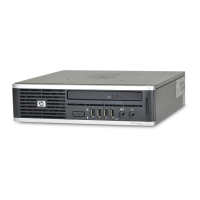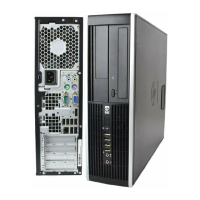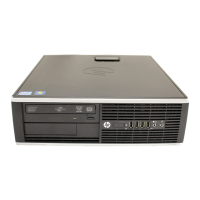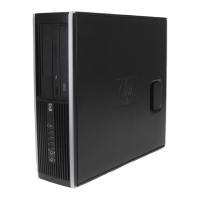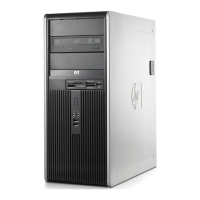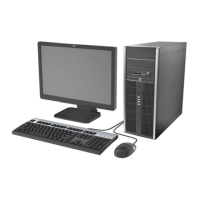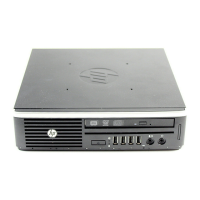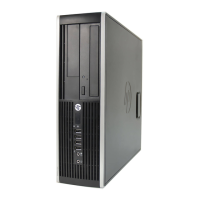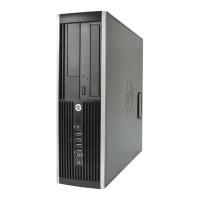Technical Reference Guide www.hp.com 5-9
Input/Output Interfaces
5.6 Universal Serial Bus Interface
The Universal Serial Bus (USB) interface provides asynchronous/isochronous data transfers with
compatible peripherals such as keyboards, printers, or modems. This high-speed interface
supports hot-plugging of compatible devices, making possible system configuration changes
without powering down or even rebooting systems.
These systems provide ten externally-accessible USB ports; four front panel USB ports (which
may be disabled) and six USB ports on the rear panel. In addition, the SFF and CMT form factors
support a media reader accessory that uses two USB ports through a system board header
connection. The USB ports are dynamically configured to either a USB 1.1 controller or the USB
2.0 controller depending on the capability of the peripheral device. The 1.1 controllers provide a
maximum transfer rate of 12 Mb/s while the 2.0 controller provides a maximum transfer rate of
480 Mb/s. Table 5-5 shows the mapping of the USB ports.
USB
5.6.1 USB Connector
These systems provide type-A USB ports as shown in Figure 5-7.
Figure 5-7. Universal Serial Bus Connector (as viewed from rear of chassis)
Table 5-5.
ICH10 USB Port Mapping
ICH10
Controller Signals USB Connector Location (all form factors
USB 1.1 #1,
USB 2.0 #1
Data 0P, 0N System board header P150
Data 1P, 1N System board header P150
USB 1.1 #2
USB 2.0 #1
Data 2P, 2N Front panel
Data 3P, 3N Front panel
USB 1.1 #3
USB 2.0 #1
Data 4P, 4N Front panel
Data 5P, 5N Front panel
USB 1.1 #4
USB 2.0 #2
Data 6P, 6N Rear panel, quad
Data 7P, 7N Rear panel, quad
USB 1.1 #5
USB 2.0 #2
Data 8P, 8N Rear panel, quad
Data 9P, 9N Rear panel, quad
USB 1.1 #6
USB 2.0 #2
Data 10P, 10N Rear panel, dual
D a t a 11 P, 11 N R e a r p a n e l , d u a l
1 2
3 4
